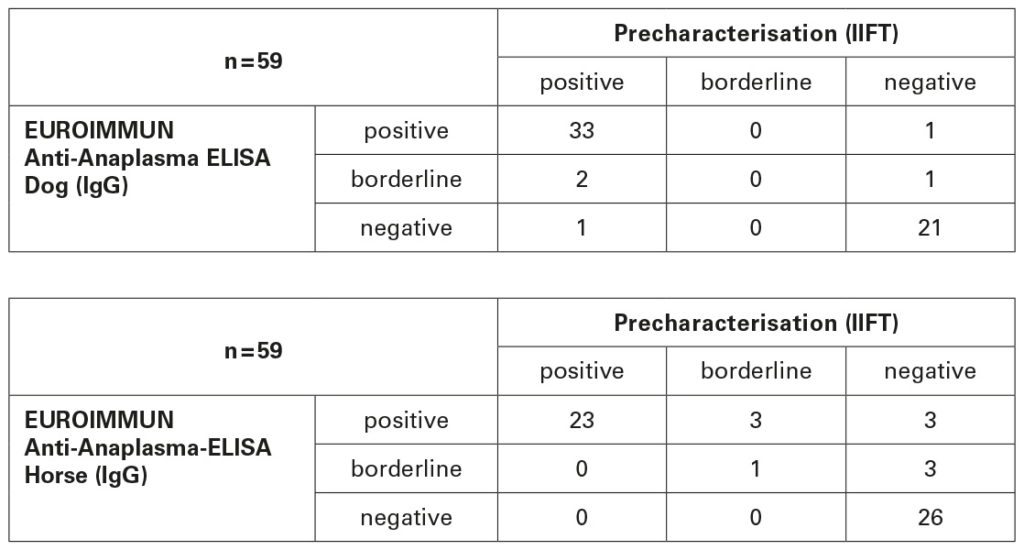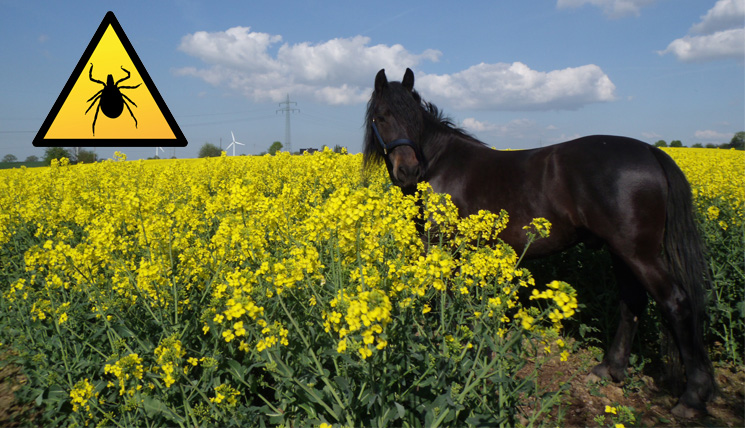Nearly everybody knows that tick bites pose the risk of Borrelia infections. However, the unpleasant tease may also cause other diseases, such as anaplasmosis, whose prevalence rises. Anaplasma phagocytophilum, a bacterium belonging to the group of rickettsials, can be transferred to humans as well as dogs and horses by the tick Ixodes ricinus. This species is the most prevalent tick in Germany and Europe and thus, the risk of infection is also present in our latitude. Studies revealed that 1.5 – 5% of the ticks in Germany are infected with Anaplasma. In Europe, the prevalence ranges between regions and may reach values of more than 20%.
In horses, anaplasmosis manifests with fever, apathy, oedema of the limbs and anorexia. Furthermore, the central nervous system and the musculoskeletal system may be impaired. Since the bacteria reproduce within the leukocytes, the immune system of the infected animal is weakened.
In dogs, anaplasmosis presents with similar symptoms, usually with a bad general condition, fever, lethargy and weight loss. Additionally, muscle pain and destruction of the nervous system have been observed.
Since the symptoms are usually unspecific, the differential diagnosis is of major importance to exclude for example Lyme disease. Potential co-infections with borrelia can make the diagnosis more complicated.
 If anaplamosis is suspected, diagnosis can be established through serological detection of antibodies against the bacteria which are produced about two weeks after infection. Among its laboratory diagnostics for veterinary medicine, EUROIMMUN offers Anti-Anaplasma ELISAs for diagnostics in dogs and horses which are based on specific recombinant surface proteins of the bacteria. Due to the simple and cost-efficient procedure, the ELISAs are also suitable for large sample sizes and the use of recombinantly synthesized antigens makes the test systems very specific at a very high sensitivity (96% and 90% specificity for dogs and horses, respectively, at 97% sensitivity, at least; see table). The serological analysis should be repeated at an interval of two weeks. An increasing antibody titer would indicate an acute infection. At best, the acute infection should be confirmed by direct detection of the pathogen, e.g. via detection of its DNA by PCR.
If anaplamosis is suspected, diagnosis can be established through serological detection of antibodies against the bacteria which are produced about two weeks after infection. Among its laboratory diagnostics for veterinary medicine, EUROIMMUN offers Anti-Anaplasma ELISAs for diagnostics in dogs and horses which are based on specific recombinant surface proteins of the bacteria. Due to the simple and cost-efficient procedure, the ELISAs are also suitable for large sample sizes and the use of recombinantly synthesized antigens makes the test systems very specific at a very high sensitivity (96% and 90% specificity for dogs and horses, respectively, at 97% sensitivity, at least; see table). The serological analysis should be repeated at an interval of two weeks. An increasing antibody titer would indicate an acute infection. At best, the acute infection should be confirmed by direct detection of the pathogen, e.g. via detection of its DNA by PCR.
